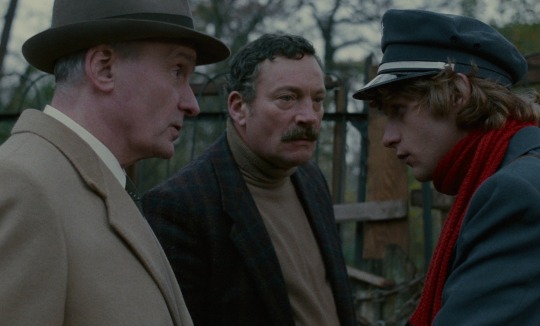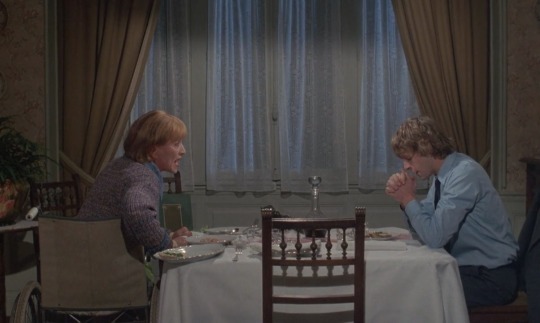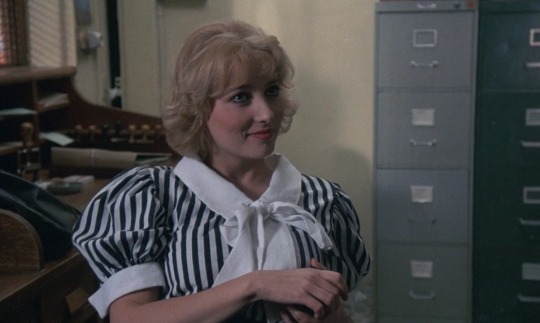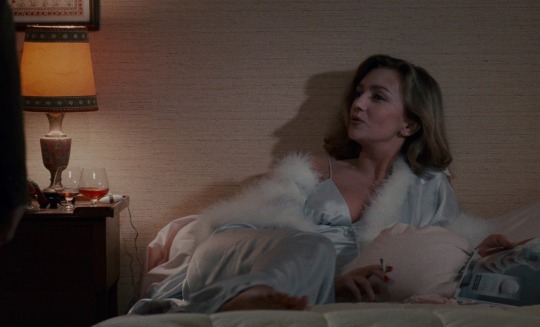#Albert André
Explore tagged Tumblr posts
Text

Albert André (French, 1869 - 1964) • Interior • c. 1893
#art#painting#fine art#art history#oil painting#albert andré#french artist#post impressionism#paintings of interiors#paintings of domestic interiors#paintings of rooms#the painted room art blog#artwork#art blogs on tumblr
30 notes
·
View notes
Text

Albert André
34 notes
·
View notes
Text

Albert André, La brasserie Georges à Lyon, 1917.
Ouvert en 1836, par Georges Hoffherr, brasseur Alsacien, le restaurant BRASSERIE GEORGES 1836 est un défi architectural : les 600 m2 de plafond sont soutenus uniquement par quatre poutres en sapin, longues de 25 mètres, amenées de Chartreuse et du Vercors par chariots à bœufs. Mais le vrai défi n’est-ce pas d’avoir su traverser les décennies en fidélisant la clientèle de génération en génération ? Que d’histoires qui commencent avec une mousse et des moments partagés autour d’une assiette généreuse, comme le laisse suggérer le tableau d’Albert André (1869-1954).
6 notes
·
View notes
Text

Idk if they're really friends guys
#André glaring at/staring really hard at Albert throughout the movie you will always be famous#plus him trying to THWACK Albert during the ambush#he's so real ilysm André#- 🦇#2024verse#andrea cavalcanti#andré de villefort#andre de villefort#albert de morcerf#our art#our posts#le comte de monte cristo 2024#le comte de monte cristo#the count of monte cristo 2024#the count of monte cristo#TCOMC
11 notes
·
View notes
Text
André/Haydée/Albert poly ending AU pls
#le comte de monte cristo#the count of monte cristo#those interlaced scenes of Haydée and André practicing and Haydée and Albert doing it in society made me 👀
9 notes
·
View notes
Note
In reference to this post…I saw you say phantom of the opera royal Albert hall 2011 and…just gotta get this off my chest- the look back that Christine does at the very end as she’s going up the stairs and the the NOD Eric does that tells her it’s okay MY HEAAAART!!!! It was improvised for that one performance but it ruins me ever. Time.
Great choice.
OMG YES!!
The way she HESITATES to leave him, even though he has done so much harm to her and those around her, at that moment, I pictured that Christine was not only pitying him; she actually realized that everything he did came from a place of love (even a very distorted one) and solitude. She nurtured feelings for him, for the good in him. OH, MY HEART!! And Raoul KNOWS she's not hesitating because she doesn't love him, but because she cares about Erik in such a loving way 😭😭that's just… complicated.
I love everything about this particular version, especially Ramin Karimloo's, Hadley Fraser's, and Sierra Bogess' acting choices, like, BITCHES YOU GAVE ME TRAUMA!!
There's a reason it's my most-logged film on Letterboxd xD
I love you for sharing this fun fact with me because I had forgotten about it, and now I'm tempted to re-watch it again!
#nora!! 💜#nice people 💜#ebie talks#ebie's asks#ebie's answer#the phantom of the opera#I could write a whole essay about the 'track down this murderer' scene#also very random but i have a giagantic crush on gareth snook as monsieur andré#gilles andre#erik the phantom#christine daae#raoul de chagny#poto at rah#the phantom of the opera at the royal albert hall
19 notes
·
View notes
Text
"Some times ago, the Anarchist Students asked Albert Camus to come and speak to them, in a room of the Learned Societies, on a theme of common interest – such as the death penalty or revolutionary violence.
The author of The Plague accepted, provided that the room was small, that the welcome was fraternal and that all took part in the conversation.
These requirements did not surprise us. We know, in fact, that the volume of “certainties” that are expressed in a given room is proportional to its sound capacity. Albert Camus is too keen on this set of sharp doubts which constitute his personal convictions to present them disguised as affirmations at a meeting. Nothing is less thunderous than his books, where tragic pessimism lay at the bottom under clear water; or his plays, where the idea while there, never presents itself as an impudent spectacle.
What we imagined of the writer and the playwright – if not and even more – we met in the conversationalist and the man; we loved even more his punctuality, his simplicity, his intimate sense of freedom, and – I insist again – his intellectual modesty. And direct contact having been established, we listened, questioned, interrupted, replied, proposed, without any conventional feeling of "distances", seeing a friend whose problems were ours, and whom we found difficult to leave.
_
No confusion, by the way. Camus, a libertarian sympathizer, and who knows anarchist thought very well, smilingly proclaimed himself “a radical socialist”: we might as well say a “liberal humanist”. He refuses to leave this middle position which consists of retaining, in the order of practical reason, part of what was imperatively denied to him in that of pure reason. The intransigence of metaphysical judgment is accompanied here by a “realism” that he took care to accentuate for us, riders of chimeras and fanatics of freedom. But if Camus marks this refusal to renounce the “duality of human things”, it is less in the face of the practical dangers of commitment than in the face of the excessive security of extreme positions.
This attitude has its beauty, but socially we deem it untenable. Still, our interlocutor poses both the use of violence and murder (whatever the revolutionary ends) as fully unjustifiable, and Tolstoyian non-violence, the search for complete innocence in the face of social murder, as completely inapplicable. We generally agree with this thesis. But Camus' Pascalian dualism leads him, on the one hand, to throw down, in absolute terms, the entire edifice of repressive moralities, with their penal sanctions - and, on the other, practically, to accept a minimum of legality sanctioned by force, consecrated by the State, applied by the police and the courts – in order to oppose a “lesser evil” to the vendettas, furies and lynchings of anarchic society, to the attacks of sadists and madmen, etc. He does not seem to see that the State, absolutist by definition, never allows itself to be reduced to the modestly technical role of a good policeman and a keeper of justice and peace. That to refuse to completely justify its violence in the name of the absolute that it embodies is to completely deny it. That there are also forms of social security based on autonomous conscience and the freely debated pact and that between these forms and their complete annihilation by the totalitarian State, everyone is, today, forced to choose.
_
Authority, for Albert Camus, can be relatively good. We do not all, I admit, have this breadth of acceptance, and our adversaries do not have it. The very idea of authority is fused for me, in all possible aspects, with the “power to punish” – a power which, not only is morally unjustifiable in its attacks against the life or freedom of individuals, but which is also unjustifiable scientifically or technically as a means of social therapeutics.
“Man is the only species that beats its young when it falls,” said Montherlant, without seeming to appreciate all the moral and intellectual monstrosity that there is in the religious idea of redemption, progress, rehabilitation, compensation, improvement, redress, amendment, retribution, beneficial suffering, eternal salvation, etc., provided by the strongest to the weakest in the form of blows added on those of “destiny”. Our total refusal of authority means that we are ready, for our part, to admit all the personal insecurity of a “social jungle” (where man would at least be responsible and free, therefore susceptible to ethical growth), rather than the wisest and most honest of “comfortable” violence, weighing crimes and punishment on its balance, in the most rigorous medico-legal asepsis. If violence seems to us to be exclusively the right of the oppressed and this in the very moment of their resistance to oppression, if by tearing down the prisons we want to burst open our universal concentration camp; if murder seems too repulsive in itself to be the object of any ritual consecration; if the modern State is odious to us (as to Camus, as to Nietzsche) because it is "the coldest of cold monsters", it is not to make us admit, in any practical measure whatsoever, the blows given by the man to his young when he falls; blows whose only excuse could be anger, and which would be a thousand times more cowardly if they were measured in cold blood.
We are not the helpers of the executioners of history, of society, of destiny or providence. We are on the other side. The very meaning of tragic existence, thus conceived, imposes this rule on us: we may as well be forced to kill those who prevents us from living, to destroy what makes us murderers, but we will never consent to punish."
-André Prudhommeaux/Prunier, "A conversation with Albert Camus" (Le Libertaire, 18 june 1948)
7 notes
·
View notes
Text

Albert André (French, 1869-1954) • Femme mangeant du raisin (Woman Eating Grapes) • Before 1910
#art#fine art#painting#paintings of interiors#paintings of domestic interiors#albert andré#french artist#post impressionism#art history#interior with figure#oil painting#19th–20th century european art#the painted room art blog#women in paintings#art blogs on tumblr#art appreciation
43 notes
·
View notes
Text
Remembering Arno Breker - artnet Magazine
The Schleswig-Holstein Haus in Schwerin, Germany, northeast of Berlin, has mounted a survey exhibition of 70 works by Arno Breker (1900-91), the German artist who is widely known as "Hitler’s favorite sculptor." Schwerin deputy mayor Hermann Junghans has denied that the show, which is on view July 22-Oct. 22, 2006, is "any kind of rehabilitation," characterizing it as "absolutely necessary to a discussion about Breker." German culture minister Bernd Neumann also argued that the event would prevent Breker’s works from gaining seductiveness due to an "aura of the forbidden." But a coalition of 30 local artists, dealers and art historians have urged that the exhibition be called off, and the noted artist Klaus Staeck, who is head of the Academy of Arts in Berlin, has canceled a forthcoming show of his own in Schwerin in protest.
All this controversy brings back to memory a visit I paid to Breker in 1985 at his home in Düsseldorf, where I flew for the day.
"Will you bring photographers?" Breker asked me in fluent French, when I called him to confirm my visit.
I was living in Paris on a fellowship, writing my Ph.D. thesis on the visual arts in France during the Occupation. Breker figured in my research for several reasons. First, because of that famous picture of Hitler flanked by Breker and Albert Speer in front of the Eiffel Tower, a photo taken shortly after Paris had been occupied by the Nazis in June 1940. It turned out that Breker had lived and worked in Paris in the 1920s, and his knowledge of the city made him a natural guide for Hitler. Second, because of the show of his bombastic sculpture at the Jeu de Paume in occupied Paris in 1942. Third, because Breker had sculpted portrait heads of at least three well-known French artists, all of whom were later tagged as collaborators -- Aristide Maillol, Jean Cocteau and Andre Derain. And fourth, because of a memoir he had recently published in which he spoke of having intervened with Hitler to save certain French personalities in danger during the Occupation.
I answered Breker’s question about photographers in the negative, and showed up at his doorstep with a tape recorder and my own camera dangling from around my neck. Perhaps out of a sense of hospitality toward a French native, Cocteau’s sculpted portrait was placed near the entrance of his home. The house was large, and had a large garden. No sooner had I come in than I was greeted by two not-very-young women -- his wife and his personal secretary -- followed by the master himself, who was dressed in his working outfit, a white coat. To me, this baldish old man in his 80s, middle-sized and slightly stooped, looked less like a sculptor than a doctor in an institution. His manner, on the other hand, was friendly, charming and talkative. Unaware that I had already activated my tape recorder, he was assuring his wife -- speaking in German -- who was advising great caution when talking to this Franco-American stranger, that he could handle the likes of me.
It was agreed that the conversation would first take place as we walked around in his garden, or rather his sculpture park, for that is what the garden looked like. Paths through formal gardens led from one piece of Breker statuary to another. The works, though quite large, were bronze replicas of sculptures from the ‘30s and early ‘40s, works that had been destroyed, or so I was told. In reproduction, the original pieces had seemed intimidating, but here the sculptures of tall naked men carrying symbolic accoutrements, or just posing, struck me as somewhat comical. It seemed that they had suffered as perches for birds, which had defecated on them, leaving here and there a greenish stain. The bronzes were, the artist told me, in the process of acquiring their permanent patina.
One piece, a head of Richard Wagner, stood out from the rest by its enormous size, at least ten times as large as a person’s head, an indication of the original large scale that was Breker’s signature, which had made him so popular with Adolf Hitler.
The conversation was pleasant and polite. I asked him when he learned his French, which was quite good, and he confirmed that he had lived in Paris in the ‘20s, and as a young artist had fallen under the spell of Auguste Rodin. You would not believe it now, I said, and he explained how his work changed when, after having returned to Germany, he began to mold the bodies of young athletes in plaster, seeking a never-before achieved smoothness of surface. That way of working made his work different from academic statuary, he claimed.
I noted that Hitler, who did not like academic art and loathed avant-garde art, had liked his work, to which he replied as expected, that he had never been an anti-Semite. I don’t remember at what point in the conversation he told me that he had never made a portrait of Hitler, and I confounded him by pulling out of my briefcase a copy of an article in an early post-war issue of ARTnews magazine featuring his bronze head of Hitler. He asked me if he could borrow this copy to make his own duplicate, and promised that he would send it back to me. He never did send me my copy, as if keeping the Xerox would be enough to eliminate the evidence. What a burden to have to live with!
That incident marked one of the few moments when I sensed I had the upper hand. Much rehearsed over the years, Breker certainly knew how to handle interviewers and give his side of history. He said he preferred American art historians to French ones, because in the U.S., people know that he helped the CIA. He even gave me the name of the American officer who came to thank him after the war.
As for his sculpture, it has nothing to do with politics, he said, for good art is above politics. Asked about those whom he had protected during the war, he mentioned Picasso vaguely, and most emphatically Maillol’s girlfriend Dina Vierny, who had been arrested and was awaiting deportation. It was hard to push her cause with Hitler, he said, because of her resistance work against the Germans, but the "chief le chef," as he referred to the Chancellor of the Third Reich, was a great admirer of Maillol, and Breker told Hitler that Maillol could not produce any work without the model in front of him.
I tried to corner him by asking why he had never made statues of older men. He replied by telling me that Stalin, or as he called him, "Shtalin," had offered to hire him after the war. He had declined, he said, for he could not envisage making statues of fully dressed people, and that was what Shtalin wanted.
We had tea and biscuits on a lovely shaded terrace, and then went inside, where I saw examples of the kind of work that he should have dedicated himself to all his life -- bronze heads. On the moment of leaving, I noted a table holding little booklets about him, and a revolving postcard holder containing images of his work. So his place was a tourist attraction.
No doubt many of the visitors to Breker's current show in Schwerin -- like those who used to and maybe still visit his mansion -- share a certain nostalgia for the days when the concept of degenerate art held sway in Germany, the Hitler years. A better way of reevaluating Breker’s work, both on historical and esthetic grounds, would be an exhibition that confronted his sculpture with art by the German artists whom Hitler condemned as degenerate. That approach would provide the context necessary to an intelligent debate.
#studyblr#history#military history#art#art history#sculpture#ww2#germany#nazi germany#france#north rhine-westphalia#île-de-france#düsseldorf#paris#arno breker#adolf hitler#albert speer#aristide maillol#jean cocteau#andré derain#charlotte breker#richard wagner#dina vierny#josef stalin
3 notes
·
View notes
Text

“Solo hay dos formas de vivir la vida. Una es como si nada fuera un milagro. La otra es como si todo fuera un milagro”. A 69 años de la muerte de Albert Einstein Por Andrés Casciani
Tiza pastel sobre papel – 32 x 46 cms (2024) *Obra disponible: compras y consultas por mensaje privado o al mail [email protected] andrescasciani.com
3 notes
·
View notes
Text
Nick Apostolides is about to start streaming Separate Ways with Craig Burnatowski (Wesker) and André Peña (Luis) is supposed to be on later.
Link to Stream
#ada wong#luis serra#luis serra navarro#luis baby girl serra navarro#albert wesker#resident evil 4 remake#re4 remake#re4r#separate ways dlc#nick apostolides#craig burnatowski#andré peña#twitch
13 notes
·
View notes
Text
"storie di pietra. sulle tracce di roger caillois": dal 13 ottobre a villa medici, roma
VILLA MEDICI / Académie de France à Rome Viale della Trinità dei Monti, 1 Mostra STORIE DI PIETRA Sulle tracce di Roger Caillois Dal 13 ottobre 2023 al 14 gennaio 2024 Curatori: Jean de Loisy e Sam Stourdzé Compagne delle nostre fantasticherie, le pietre, più antiche della vita, hanno esercitato sugli esseri umani un fascino di cui ognuno di noi condivide l’esperienza: una raccolta, un lancio,…

View On WordPress
#Abdelkader Benchamma#Académie de France à Rome#Accademia di Francia a Roma#Accademia di Francia a Roma – Villa Medici#Agnieszka Kurant#Albert Renger-Patzsch#Albrecht Dürer#Alexandre Isidore Leroy de Barde#Alicja Kwade#Ana Mendieta#André Breton#Andrea Branzi#Andrea Schiavone#Anne-James Chaton#Antonio Tempesta#Ariane Varela Braga#art#arte#Auguste Rodin#Aurélien Froment#Édouard Riou#Éric Feferberg#Étienne Chambaud#Évariste Richer#Brassaï#Carl Gustav Carus#Carl Spitzweg#Charlotte Perriand#Constantin Brancusi#Damien Hirst
2 notes
·
View notes
Text










Poulet au vinaigre (Cop Au Vin, 1985)
"I'm paid a modest sum to nose around, spy and pester people. And to find the truth."
#poulet au vinaigre#cop au vin#french cinema#claude chabrol#dominique roulet#1985#jean poiret#stéphane audran#michel bouquet#jean topart#lucas belvaux#pauline lafont#andrée tainsy#jean claude bouillaud#jacques frantz#albert dray#henri attal#dominique zardi#caroline cellier#josephine chaplin#beautifully shot mystery thriller with an eye toward social satire; the influence of Simenon hangs heavy‚ altho Poiret's Insp. Lavardin is#nothing like the steadfast Maigret. quite a bold move‚ to make your detective quite so objectionable: Lavardin isn't particularly likeable#from his introduction (more than 40 minutes into the film) but once he starts beating his suspects and waterboarding others as an#interrogation technique‚ he becomes downright detestable. the actual mystery plot is relatively slight‚ and the various twists won't#surprise anyone half way familiar with the genre‚ but this is more about the creation of a beautifully rendered portrait of small town#intrigues and the diseased spread of secrets than it is a conventional genre picture. the cast are uniformly excellent‚ and as much as i#disliked the character i have to say Poiret in particular is never less than mesmerising; every carefully chosen movement and expression‚#each discomforting smile as he bends the law until it breaks‚ in the name of pursuing 'justice'. my first Chabrol but certainly not my last
4 notes
·
View notes
Text
7 gennaio … ricordiamo …
7 gennaio … ricordiamo … #semprevivineiricordi #nomidaricordare #personaggiimportanti #perfettamentechic
2023: Adam Rich, attore statunitense principalmente noto per il ruolo di Nicolas Bradford, ultimo degli otto figli, nel telefilm La famiglia Bradford. (n.1968) 2022: Vitaliano Trevisan, è stato uno scrittore, attore, drammaturgo, regista teatrale, librettista, sceneggiatore e saggista italiano. (n.1960) 2022: Mark Forest, pseudonimo di Lou Degni, attore e culturista statunitense. Di origini…
#7 gennaio#7 gennaio morti#Adam Rich#Albert Finney#André Courrèges#Carlo Carlo Hinterman#Carlo Hintermann#Emilio Ghione#Emilio Luigi Carlo Giuseppe Maria Ghione#Fred Church#Fred Rosell Church#Harrison George Hains#Harry Hains#Ingrid Lilian Thulin#Ingrid Thulin#Lou Degni#Marion Ramsey#Mark Forest#Morti 7 gennaio#Morti oggi#Paolo Bucinelli#Richard Joseph Libertini#Richard Libertini#Rod Taylor#Rodney Sturt Taylor#Solange#Susanne Cramer#Vitaliano Trevisan#Vittorio Mezzogiorno#Za la Mort
1 note
·
View note

